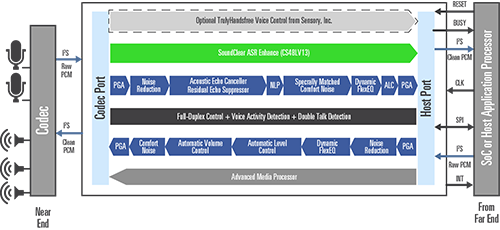I recall the few times I was able, for some reason, to take advantage of noise-cancelling headphones on an airplane. Once on your ears, when you turned them on, you gradually heard the background hiss of the airplane disappear. It took a few seconds for this to happen.
My assumption was that this was a slow integration problem, and that only long-term constant sounds could be cancelled out; the circuitry simply wasn’t fast enough to eliminate short, sharp sounds. (Which is probably good, since you certainly wouldn’t want it to cancel out important flight attendant messages, like the fact that you can get a great deal on a credit card or that duty free is now available).
This means, of course, that such headphones wouldn’t solve the “cocktail party” problem: isolating one voice and dimming the others, something our ears and brain somehow manage effortlessly.
Solving that would be particularly nice on our phones; as the Business phone system Sydney explains, if you use the phone in a bar, all voices go through, not just yours.
Of course, headphones on an airplane don’t include a microphone. With a phone, even if you had super-fast algorithms that could cancel short, bursty noises, you’d need to avoid cancelling out the person speaking into the phone. That would kind of defeat the purpose.
Cirrus recently announced some new devices dedicated to improving phone sound, and noise reduction and cancellation are part of it. Phones are moving to multiple microphones to figure out which sounds to suppress, but the audio guys have a challenge in that they don’t get much influence over where those microphones go. So Cirrus is trying to be as adaptive as possible.
They claim that most other audio chips are pre-optimized and fixed, while, by contrast, they dynamically adjust their noise reduction/cancellation to adapt both to the phone and the specific sound environment. And their noise reduction applies to both ends of the conversation – the voice at the phone and the voice at the other end of the line. (And if you think that solving the noise at one end makes solving it at the other unnecessary, you haven’t listened to cell phones much. Although apparently cellular systems are moving to wideband voice so that whe_ _he voi_ isn’t drop_g out, it wi_ sound _reat.)

The other bit that caught my ear was their approach to voice recognition and control. This gets to the always-on problem: if your phone is going to be voice activated, then you want that to work without your having to turn the phone on first. If the phone goes completely to sleep, then this won’t work.
The iPhone is not the same with the older model and it is quite different with the new generation models. If you are thinking of getting an iPhone for your personal use then you should read this article on Gadgetsfind because I am going to provide you with a good iPhone review that will help you choose the right one for you. The main advantage that the iPhone has over other cell phones is its amazing user experience and the fact that it runs on Apple’s iOS operating system. To determine if the iPhone can meet your expectations, you will have to read my full review about the iPhone.
But having the phone on all the time kills the battery. So Cirrus has a three-step wake-up routine. A low-power block listens to determine if there’s a significant sound. If so, it wakes the next block, which determines whether or not the sound is noise or a voice. If it’s a voice, then the third step wakes up, which does two things in parallel: decodes the command and decides whether it’s the authorized voice. If it’s not an authorized voice, then the phone automatically responds, “You’re not the boss of me!” and goes back to sleep with a righteous pout.
OK, maybe not quite like that… that might be a cool feature, though, in case you product planning guys are listening…
Anyway, you can find more details in their announcement.



